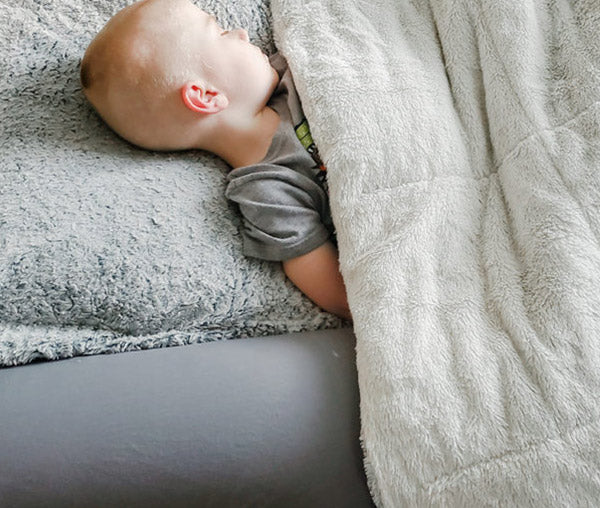
October 30, 2020
How to Transition from Two Naps to One Nap Per Day
In September, my 18-month-old will start preschool two mornings each week. During registration in May, I asked the director for information about nap time during school. He stared at me blankly and said, “Oh, she won’t nap here. She’ll nap at home after you pick her up at 12:30p.m.”
It took me a minute to fully comprehend what he had just said. No more morning nap? My sleep-dependent child would now only get one opportunity to rest? Not only that… I would only get one nap to get things done?! I realized that in order for her to be ready for school in the fall, she would need to start the transition from two naps to one nap during the summer. Here’s what has worked well for us over the last three months.

Stay Busy
Since my daughter had become so accustomed to taking a morning nap, I think she felt tired out of habit more than necessity. She just needed a little push to keep her alert for a longer period of time.
At the beginning of our no-nap training, instead of laying her down at the first signs of sleepiness, I distracted her instead for a longer stretch of awake time. We played games, went outside or met up with her peers in the community. I discovered if we had a jam-packed schedule, she was much more likely to stay awake and tire herself out for a better solid midday nap.
Tip: if you’re out and about close to nap time, do everything in your power to prevent your child from falling asleep in the car. The only thing worse than one nap per day is no nap per day. Unfortunately, while some kids may easily transfer from the car seat to crib, my child is not one of them. There were multiple times when she would get 10 minutes of shut-eye in the car, only to refuse to go back to sleep once we got home. While road noise and music just lulled her to sleep faster, talking to her kept her engaged. Although we’ve pretty much mastered the one nap schedule by now, I still play a “repeat after me” game and ask questions to keep her awake until we get home.

Encourage Quiet Time
When toddlers become overtired, they often catch a second wind instead of wanting to conk out in their crib. This can make both settling down and falling asleep difficult when you begin the transition from two naps to one nap.
While every child’s needs are different, 18-month-olds generally need to nap one to three hours per day. Based on her individual needs, my goal was to train my daughter to take a two-hour midday nap. Turns out, the trick to teaching her how to have one nap was to leave her in her crib for as long as possible during the nap time duration.
At first, since she was previously used to getting two short naps during the day, she would sleep for one hour and then wake up. Before intervening, I checked the monitor:
If she was talking to herself, playing or generally content in her crib
- I let her stay put for as long as possible.
- More often than not, she would fall back asleep.
If she was crying or screaming (or both)
- I didn’t rush in right away.
- Instead, I waited 15 minutes before walking in to soothe her.
- Without picking her up, I’d rub her back reassuringly, hand her a stuffed animal and leave the room.
- From there I’d wait another 15 minutes and repeat if she hadn’t settled down.
- If she was still upset after 30 minutes, I let her out and resolved to try again the next day.
The most important thing is to teach your child that they need to dedicate time to rest. While the best-case scenario is that they fall asleep, it’s okay if they don’t. Staying awake is fine, but they need to learn your expectation is for them to rest quietly in their room for a pre-determined amount of time.
Early Bedtime
If your child skips their nap altogether or takes a very short one, avoid offering another nap later in the day. Instead, move bedtime up by thirty minutes to an hour as part of the transition from two naps to one nap. Part of the training is to remind them they get one chance to rest during the day and one chance only. An earlier bedtime ensures toddlers get the rest they need and gets them back on track to try again the next day.
Does your 18-month-old still take two naps per day? If you’ve transitioned to one, how did you reduce nap frequency? I’d love to hear what worked well for your family.